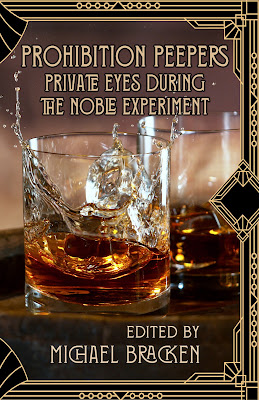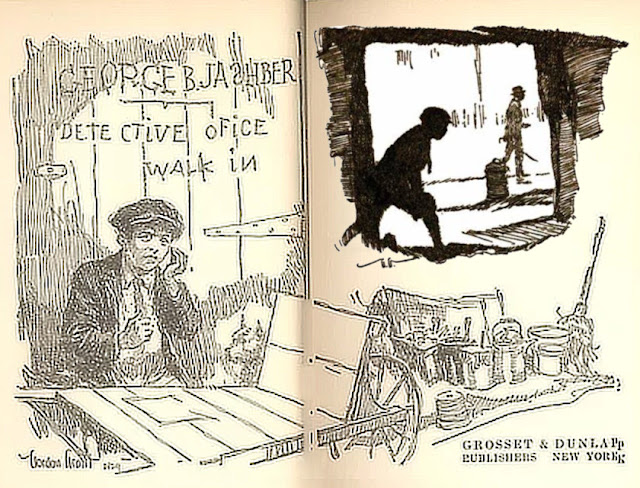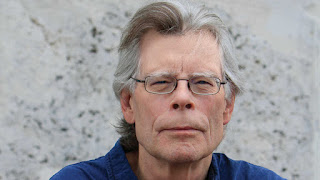Think of some standard advice about writing villains. Often, the hints center on not making the bad
guy the living embodiment of evil. Make them relatable. Give them a sympathetic motivation for their anger and their actions. These men and women do bad things, but for reasons we, the readers, understand and perhaps even empathize with. An engaging villain might make us hold up a mirror to our own lives and ask if, similarly situated, our actions would be different?
The other day, for business reasons, I found myself thinking about the collateral consequences of crime. We easily imagine the ramifications of crime on victims. Assaults might cause social withdrawal. Murder or robbery often economically harms the victim's family. But what about the collateral fallout for defendants convicted of a criminal episode? These consequences, many seemingly coming from nowhere, punish a defendant after he or she has paid their debt to society. They're potentially a source of anger or resentment that may frequently be overlooked by people writing crime fiction. I'd like to look at a few.
(I'm focusing primarily on Texas law. The specifics in your jurisdiction may vary.)
1. Moral Turpitude--In many cases, before a conviction deprives a defendant of a particular right or privilege, the crime must be a felony or an offense involving moral turpitude. "Moral turpitude" is defined as base, vile, or depraved conduct. It labels inherently dishonest behavior. It is hard to argue with so far. Still, the list of crimes involving moral turpitude includes prostitution, any class of theft, failure to appear for court (bail jumping), and assault by a man against a woman. Crimes that may involve moral turpitude include bigamy, failure to stop and render aid at a crash scene, and issuing of a bad check.
Moral turpitude is often a critical factor in denying a job opportunity, professional license, or a loan or housing application. The label may long outlive the end of the case.
2. Loss of Education Funding--Students convicted of any federal or state law involving possessing or selling a controlled substance may be temporarily or permanently ineligible for federal education loans or grants.
3. Other Federal Programs--Narcotics or other convictions may result in temporary or permanent loss of food stamps, health care benefits, and housing assistance. Social Security may also be disrupted, at least temporarily.
4. Asset Forfeiture--Seizing a defendant's assets believed to be used in the commission of certain offenses or purchased with criminal gains from those crimes is possible in federal and state court, particularly narcotics cases. Cash, automobiles, houses, and businesses might be the targets. In one case, a drug dealer lost lottery winnings because he couldn't prove that he didn't buy the lottery tickets with legitimately earned dollars.
5. Child Support--The Texas legislature recently passed a law obligating people convicted of the
intoxication manslaughter of a parent to provide support for the deceased's children. The obligation extends until the child reaches 18. (Although it may be hard to enforce if the defendant goes to the penitentiary.)
6. Immigration--This could be an entire blog. The law is complex and evolves with shifting foreign policy priorities. The consequences to a defendant, however, are draconian enough that defendants must acknowledge they understand that there will be immigration ramifications before a judge will accept a guilty plea in Texas.
7. Firearms Restrictions--State and federal law limit a convicted defendant's ability to possess firearms following felony and some misdemeanor convictions.
8. Driver's License Restrictions--Various suspensions follow a final conviction for many offenses. These include graffiti, theft of motor fuel, tampering with a governmental record, intoxication offenses, some drug offenses, and failure to register as a sex offender.
9. Registration as a Sex Offender--A plea requires the offender to have a public record made of name, residential address, mug shot, and shoe size, among other things. The public posting might serve as a drag upon a defendant's future social status.
10. Travel--Travel documents of a convicted offender may be revoked. An issued passport may be withdrawn, or a pending application may be denied. Visas to a foreign country may not be granted based on a criminal conviction.
A specific example of this is Canada. Canadian border authorities have immediate access to the federal crime information system, and can screen travelers carefully. Canada may
deny entry to someone convicted of driving while intoxicated, including first-timers. There are workarounds, but they involve advance planning and expense.
11. Public Service--A conviction may affect a defendant's ability to vote, hold appointed, or elected public office or serve on a jury.
In a future blog, I'd like to return to reviewing collateral consequences and look at some specific occupations where a conviction might bite a defendant. My point in publishing this partial list is not to argue in favor of the restoration of the above-listed rights. That's a political decision for each reader to weigh. Instead, I hope readers understand the range of collateral effects that may follow a criminal conviction. These consequences have indirect legal ramifications, financial penalties, social costs, and the loss of rights and privileges.
As a criminal practitioner, I can tell you that most of these consequences are never discussed as part of a plea negotiation. A defendant may plead to a credit-for-time-served sentence. The deal seems in his best interest as he stands before the judge. Then, the unconsidered consequences arise as he seeks to move on from his criminal decision. A defendant may grow resentful as economic doors close and opportunities never appear. He may feel trapped because of the collateral effects he never imagined. You may have a defendant who feels like a victim.
And as a writer, you can work with that.
I'll be traveling the day this posts. I apologize in advance if you comment and I don't respond.
Until next time.
 Two weeks ago I reported on my adventures at Bouchercon in beautiful San Diego. As usual I had my trusty notebook with me and was jotting down words of wisdom, and other words as well. Here are the results...
Two weeks ago I reported on my adventures at Bouchercon in beautiful San Diego. As usual I had my trusty notebook with me and was jotting down words of wisdom, and other words as well. Here are the results... "People like to talk to writers and they tell me things they wouldn't if they were sober." - Jeffrey Seger
"People like to talk to writers and they tell me things they wouldn't if they were sober." - Jeffrey Seger

























